Plant health relies on healthy roots. It depends on well-aerated soils and proper watering practices. Good drainage and a hole at the bottom of the pot or container are critical for the plant’s wellbeing. It ensures the water is draining well and the air is available for roots to thrive. In this article, we will answer the question “do pots need drain holes?”
While different plants require various kinds of drainage, for example, some plants can tolerate the standing water conditions and others not (may die due to excess moisture levels).
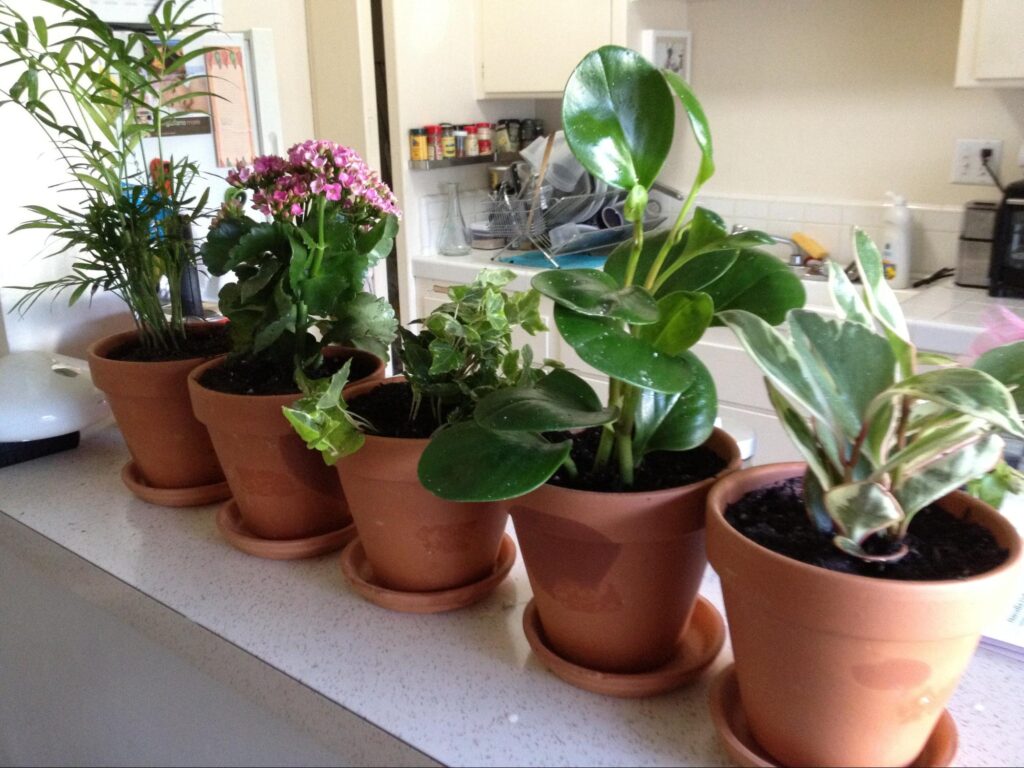
A collection of indoor plants
A sound drainage hole ensures the healthy growth of an outdoor and indoor plant. At the same time, the lack of drainage holes in your pots is one of the significant problems in the cases of unhealthy and dying plants. When growing your indoor or outdoor plants, ensure that your containers have suitable drainage holes because it is critical for plant health.
In this guide, we’ll learn about the importance of drainage holes and why the plants with well-draining pots perform well.
Why Do Plants Need a Good Drainage to Thrive?
Good drainage and well-draining soils are the keys to healthy roots, which means healthier plants. Therefore, the drainage holes in pots are essential because pots without drainage holes do not provide ideal conditions. So be sure your plant pots have drain holes.
At the same time, a few plants, such as shoreline plants, do not need any good drainage and prefer wet soils for their growth.
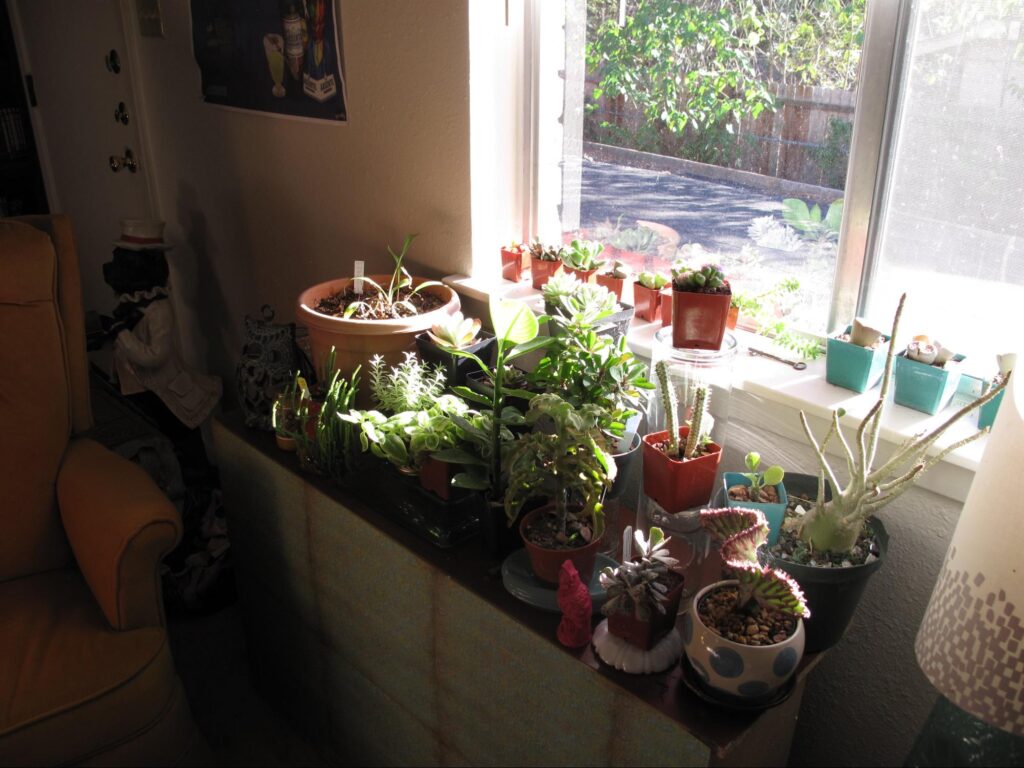
A close up of the indoor plant garden
Benefits of Drainage Holes For Plant Health
The plant pots with drain holes allow the free drainage of water and prevent fungal infections such as root rot. There is little space for air to get to the roots in waterlogged soils. The plant’s roots start to die due to a lack of oxygen and nutrients, ultimately killing the entire plant.
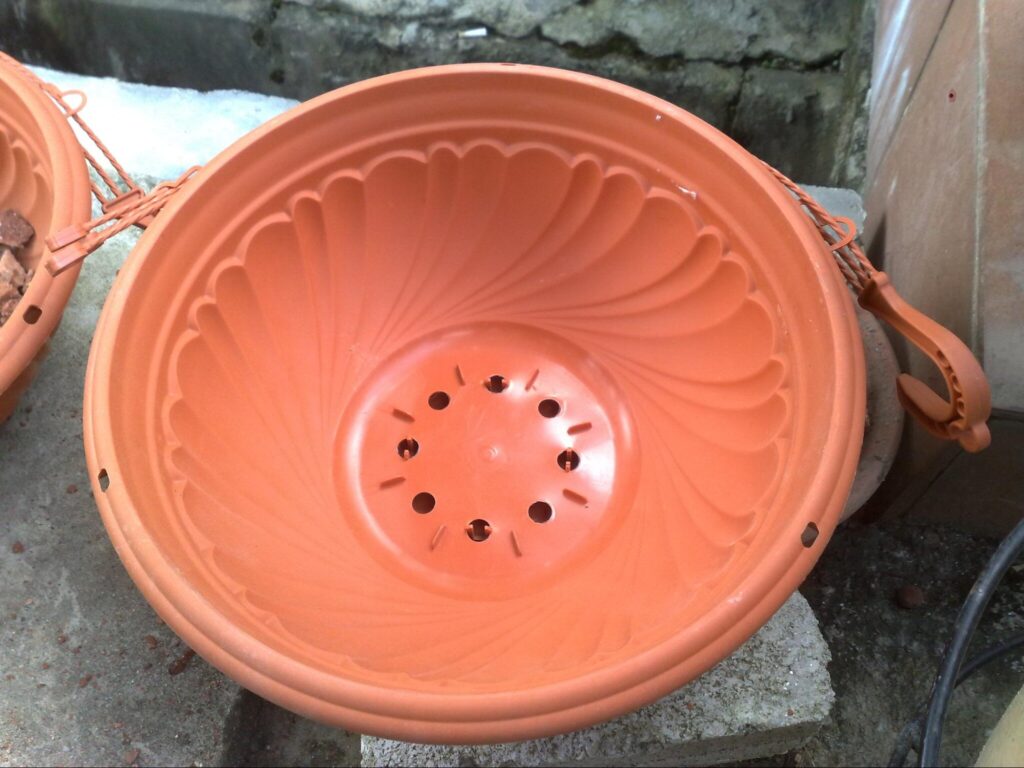
Plastic nursery pot
Plant pots with drain holes also prevent nutrient build-up and impact plant growth and performance. In the case of plant pots without drainage holes, the salts and excess fertilizers accumulate in the potting soil and become harmful to plants if left for a longer time.
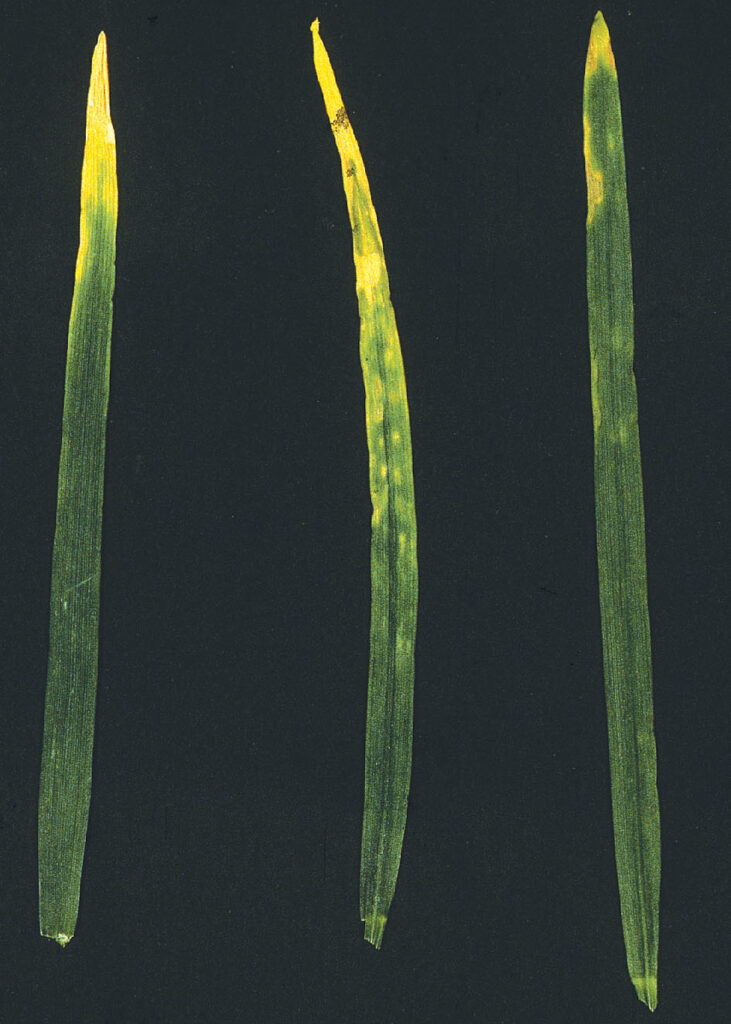
Phosphorus toxicity in wheat leaves
Therefore good drainage ensures the washing of any salt and fertilizer buildup when you water the plant. Otherwise, too much salt and fertilizer turn the plant leaves yellow and brown and stunt their growth.
Plant pots with drainage holes deter the growth of bacterial and fungal infections. These microbial pathogens love wet soil and damp environments to flourish. When you over watered your plants in pots without drainage holes, provide them with ideal conditions to grow and infect.
Planter pots with drainage holes ensure the moisture levels at optimum and reduce the chances of fungal and bacterial diseases. No growth of microbial pathogens means healthier plants.
Drainage holes in your pots also ensure more air circulation and optimum humidity levels. Proper air circulation plays a vital role in plant care as it prevents plant roots from rotting and dying by optimum oxygen supply.
Drainage holes also remove the excess water from pots and prevent the waterlogged soil.
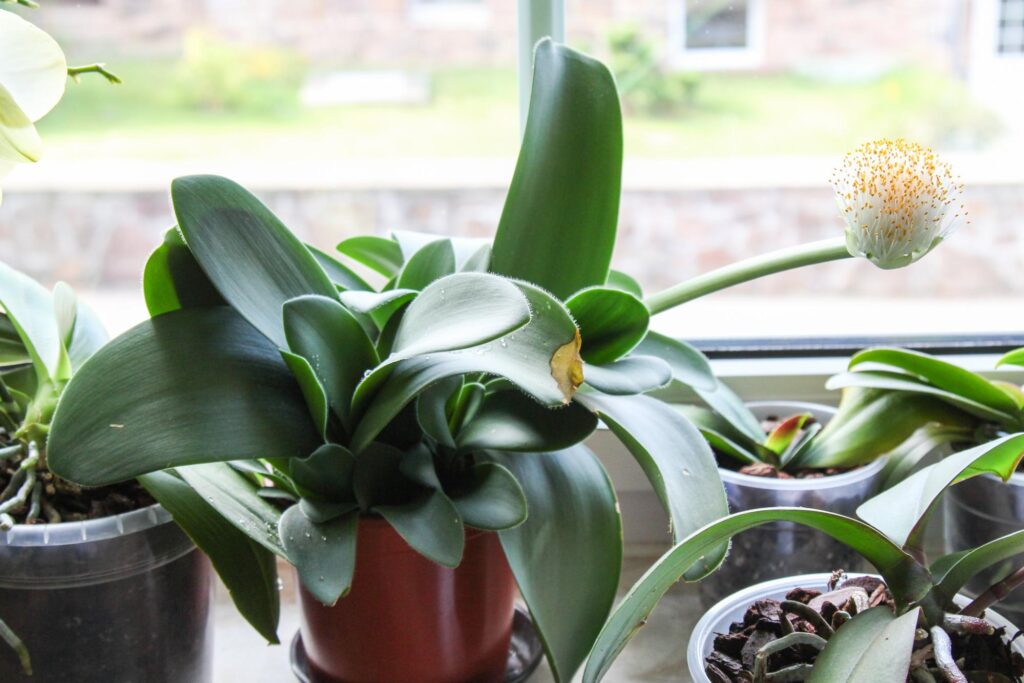
Healthy and happy indoor plants in pots with drainage holes
RELATED: 25 Beautiful Flowering Succulents To Grow Indoors (With Pictures)
Plant Pots without Drainage Holes
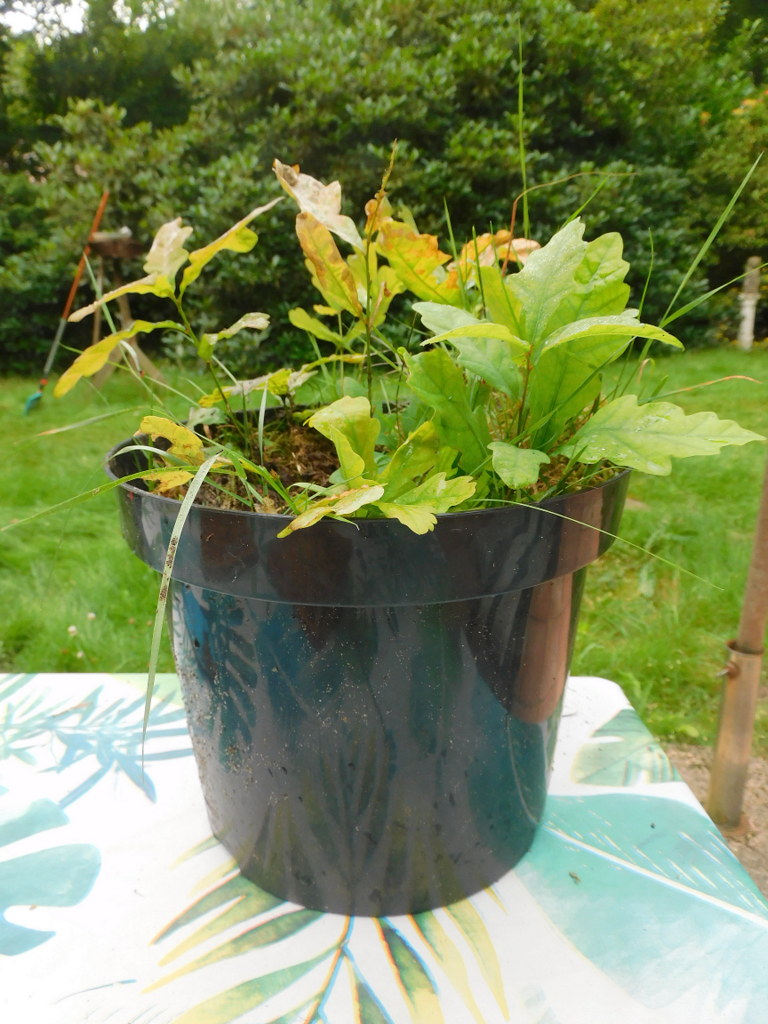
Plant pot with no drainage hole
There are plant pots with no drainage holes, but some recommendations for using these pots.
For example, fill the bottom layer of the pot (no drainage hole) with pebbles as a drainage layer. This practice will allow excess water to flow into the drainage layer and not create stagnant water conditions. At the same time, some gardeners disagree with this technique because water will not flow in two different mediums and remain within the soil.
RELATED: Importance of Soil pH and Nutrient Availability for Plant Health
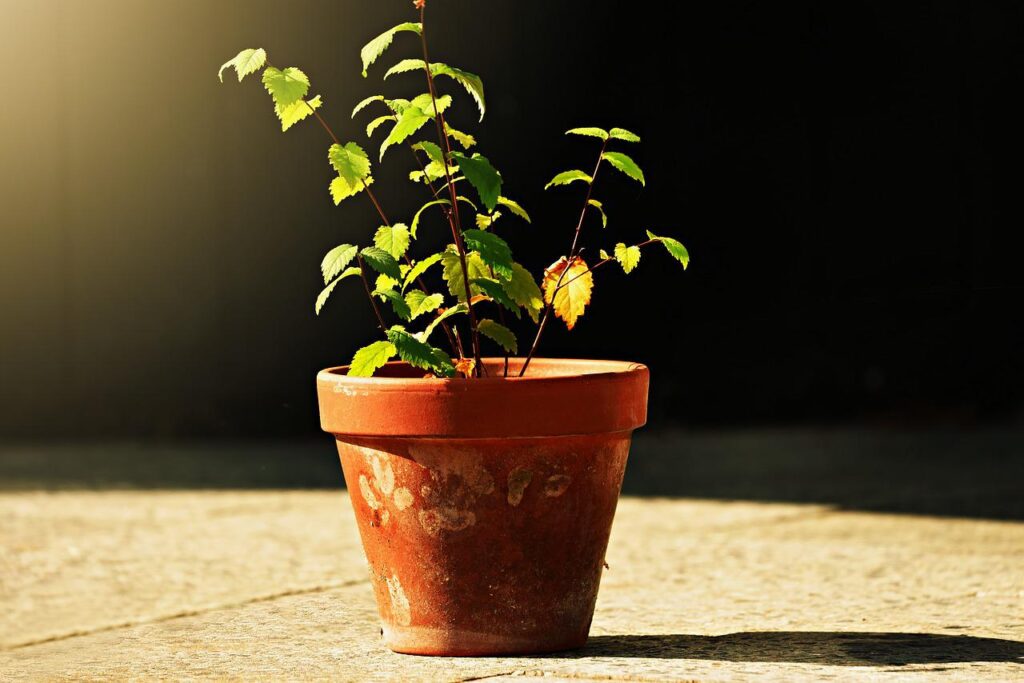
A classic pot with a sound drainage hole
However, there is also a way to use a decorative pot with no drainage holes and double potting. Plant your favorite plant in the small classic pot with suitable drainage holes and place them in a large decorative jar with no drainage hole.
Take the small classic pot out from the decorative pots without drainage holes and water your plant for watering purposes. Using pebbles in the decorative pot creates draining layers inside and on top of the pot drainage holes.
Now water your plant, and the gravel or pebble layer will function as draining material and keep the water away from plant roots.

Typical pots for bonsai plants with mesh at drainage holes to keep the soil in place
Note: The double potting practice will help optimum humidity levels and proper air circulation. Also, the pots without drainage holes should not be used in outdoor gardens because heavy rains will make no way of water flushing and encourage the growth of harmful microbes.
Other Uses of Double Potting
The other most important benefits of double potting are;
- To overcome the soil temperature fluctuations
- To make plants compatible with various environmental requirements
- To change seasonal displays of flowering plants quickly
- To solve the problem of drainage holes in a decorative pot without drainage holes
Is One Drainage Hole Enough?
The one drainage hole at the bottom of the classic pot is enough with a flat bottom. The plain bottom of the pot ensures the even distribution of moisture levels for plants (try to provide your plant with proper soil). However, it is excellent to have a drainage hole, but you can have more than one.
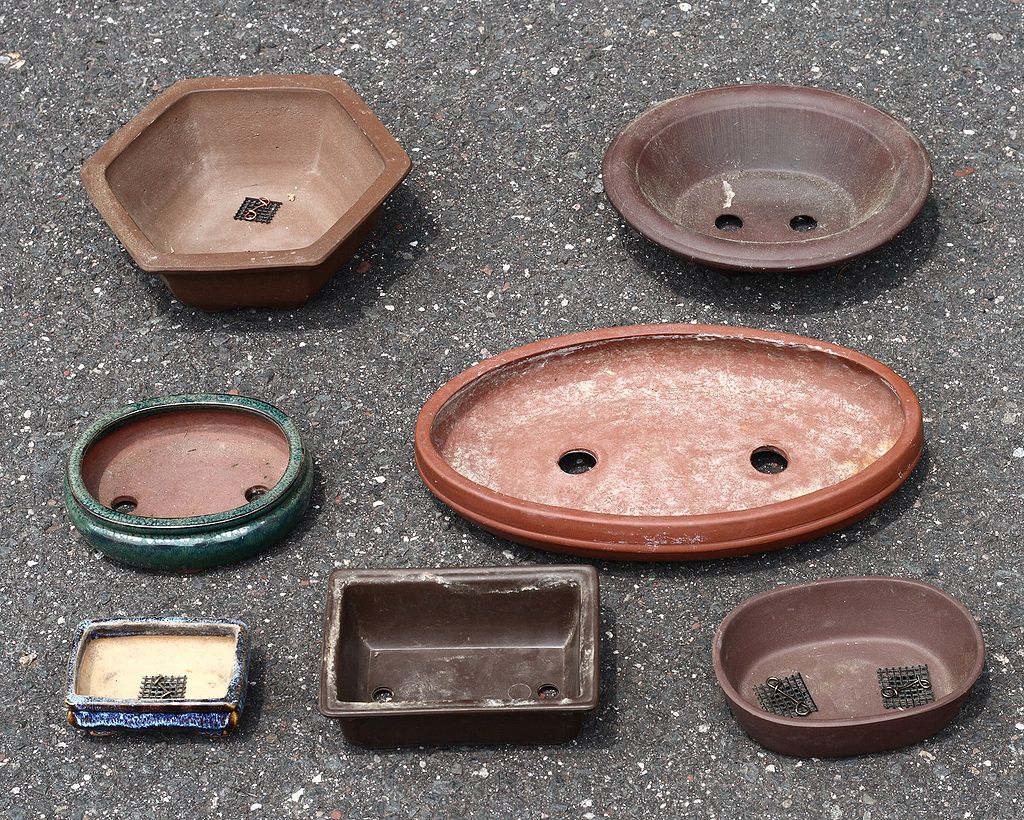
A display of different types of pots for bonsai plants (pot plants with one drainage hole)
RELATED: What Are the Important Roles that Plant Nutrients Play for Growth and Development?
Frequently Asked Questions (FAQs)
What Type of Plants Does Not Need Drainage?
Proper drainage and optimum watering are vital factors for healthy growth and production. However, some plants do not need drainage holes at all to grow and reproduce, and these are;
- Snake plant
- Oleander plant
- Chinese evergreen
- Kupukupu fern
- Crotons
- Dumbcane
- Schefflera
- Pothos
- Cordyline
- Spider plants
- Rough horsetail
- Succulents
- Pineapple
Is it OK to Put Rocks on Top of the Soil?
Yes, it is good to put rocks on the top of the soil of your potted plants because it offers tremendous. For example, it enhances potted plants’ cosmetic value and prevents water loss, fungus gnats, weeds, and soil loss. These rocks on top of the soil surface will also work as organic mulch and play a critical role in water retention and maintaining hydration for an extended time.
Furthermore, rocks can be used as heat-attracting mulch for the heat-loving plants in outdoor plants. So, these rocks are an excellent source of water retention and hydration for both outdoor and indoor plants.
Are Pots With Attached Saucers Good?
The pots with attached saucers are suitable for your plant health because they make removing overflow difficult or impossible, thus blocking the oxygen supply for roots. Therefore, roots constantly sit on standing water (saturated) and cannot perform well.
Good drainage is essential for the health of roots and a vital part of plant care. Be sure to buy the pots with detachable saucers to empty the excess water. So soil and plant roots will have an abundant oxygen supply with no salt buildup.
What Happens If a Planter Does not Have a Drainage Hole?
Plants in pots without drainage holes are susceptible to many problems such as plant root rot, nutrient toxicity, poor aeration, and microbial infections. In these conditions, the soil surface appears dry, while it is soggy or saturated at the bottom of the pot.
These conditions deprive the plant of essential nutrition and turn their foliage yellow, brown, or black. It leads to stunted growth and plant death. While if you try repotting, the roots of the affected plant will look brown or mushy due to excess moisture.
Another critical reason to have drainage holes in your pots is to protect your plant from excess nutrient buildup. These salts cause harm to plants. So a plant pot with drainage holes will allow the free movement of water, flushing of extra nutrients, and proper aeration for roots.
What Do You Put at the Bottom of a Planter?
You can put different materials in large planters at the bottom to fill. It can make organic or inorganic, such as;
- Water bottles, solo cups, milk bottles or jars, nursery pots or unused plastic pots, and empty detergent bottles
- Coconut fiber, mulch leaves, recycled cardboard, newspaper, wheat straws or other plant residues, and pine cones (improve soil structure and act as a conditioner)
Should I Put Anything in the Bottom of my Planter?
A smaller pot does not need any fillers, while the more giant planters need fillers to prevent excess potting soil mix and better drainage. If the drainage holes are more significant than half an inch, use mesh to hold the soil. You can fill the bottom line of your planter with a kitchen colander, large rocks, empty plastic pots, and soda cans.
Also, you can fill your planter with organic materials such as coconut fibers, wood chips, wheat straws, and sphagnum moss. The benefit of using plant-based material is that it will break down and add nutrients to the soil, ultimately benefiting the plant.
Can I Drill Drainage Holes in Ceramic Pots?
Yes, you can drill holes in your ceramic pots, but a good drill is the key to achieving the goal. For this purpose, you can use an electric or a battery-powered drill. A carbide bit is also successful for drilling in ceramic pots.
Place the drill bit perpendicular to the pot base and apply the pressure to start drilling. Continue to use force on the electric drill until the drainage hole into a flowering pot is created (the size of the drainage hole depends upon the type of flowering or foliage plant). So when you water plants, it will prevent the roots sit on standing water.
Do Terracotta Pots Need Drainage Holes?
Terracotta pots already have drainage holes and are ideal for plants that need a good amount of aeration and water movement (drain freely). Also, these pots make the perfect choices for the plants that require dry soil before the next watering.
Should Large Planters Have Drainage Holes?
All planters should have wood, ceramic, or plastic drainage holes to keep the soil well-drained. Drainage holes mean plant roots get proper air, nutrients, and water. Moreover, the drainage holes will prevent the plants from dying due to water saturation, especially the succulents.
If your planter lacks a drainage hole, the salt buildup occurs, leading to weaker roots and plants.
How Do I Get Good Drainage in My Pots?
Good drainage depends upon the excellent potting soil mix. At the same time, a good potting mix should have balanced amounts of organic material such as decomposed animal manure and perlite. Also, sterilize your garden before mixing it with other materials to kill root rot fungi.
Sources For Further Reading
- Drainage Is Critical to Plant Health – Choosing a Container for Planting – Successful Container Gardens – UniversityofIllinoisExtension. (n.d.). University of Illinois Extension. Retrieved June 4, 2022, from https://web.extension.illinois.edu/containergardening/choosing_drainage.cfm
- Collins-Smith, M. S. M. (2018). So Why Do Plant Containers Have Drain Holes? Mississippi State University Extension Service. Retrieved June 5, 2022, from https://extension.msstate.edu/blog/so-why-do-plant-containers-have-drain-holes
- Cue, K. (n.d.). The Hard Truth about Rocks at the Bottom of Planting Containers | Nebraska Extension. NEBRASKA EXTENSION IN DODGE COUNTY. Retrieved June 5, 2022, from https://extension.unl.edu/statewide/dodge/the-hard-truth-about-rocks-at-the-bottom-of-planting-containers/
Editor’s Recommendations
Juicy Secrets: A Guide To Growing Strawberries In Pots
Potassium for Houseplants: How to Use It for Happier and Healthy Plants?
All About Worm Castings and Their Benefits to Plants & Soil!







